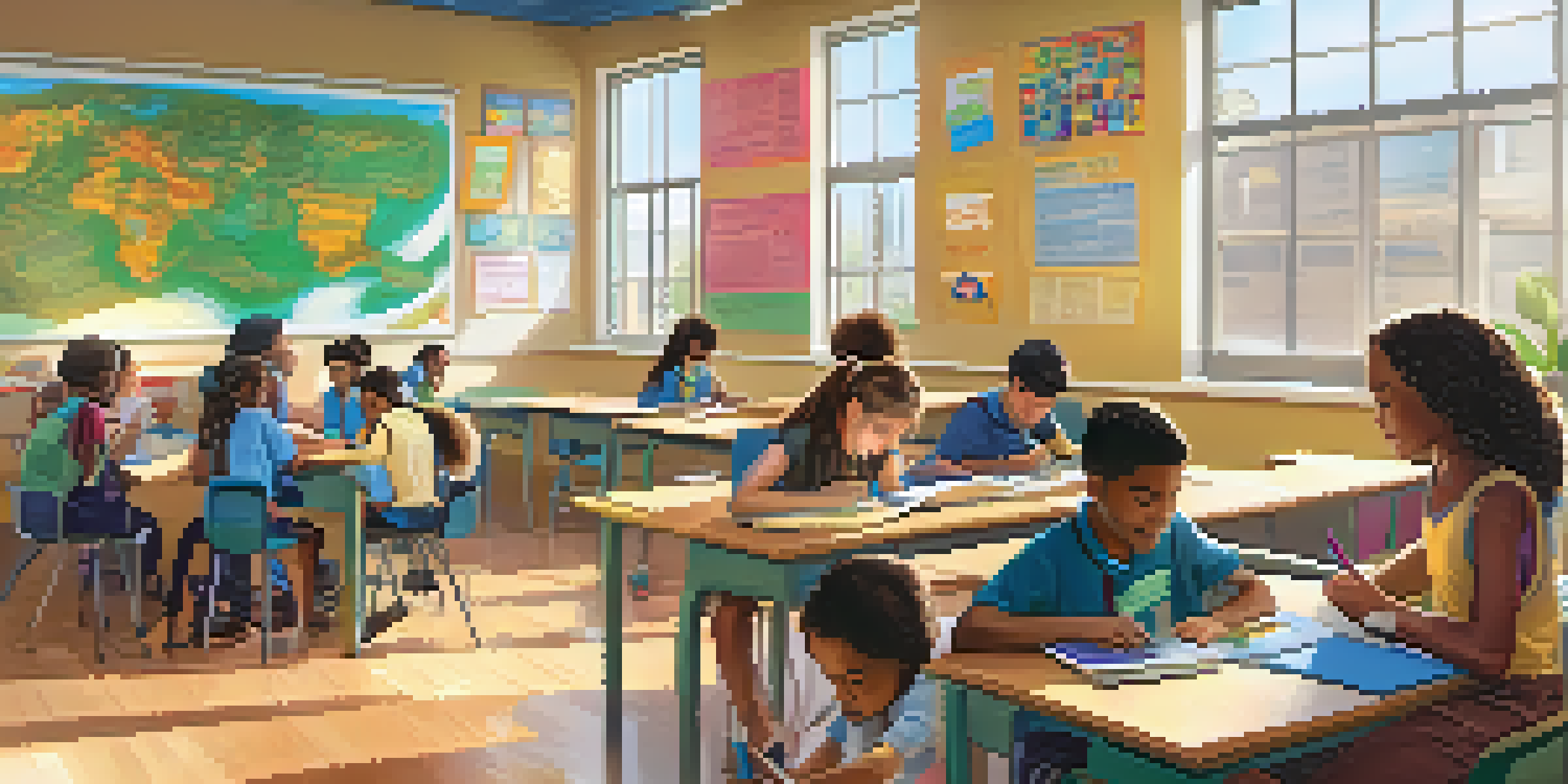Utilizing Assessment for Personalized Learning Experiences

Understanding Personalized Learning and Its Importance
Personalized learning is all about tailoring education to meet each student's unique needs. Imagine a classroom where the curriculum adapts based on individual strengths and weaknesses. This approach not only boosts engagement but also helps students take ownership of their learning journey, making it more relevant and impactful.
Personalized learning is not a one-size-fits-all approach; it is about creating a learning experience that is tailored to the individual needs of each student.
The essence of personalized learning lies in recognizing that no two students are the same. Just like a favorite recipe might require specific ingredients for the best flavor, education must be customized to cultivate each learner's potential. This method fosters a sense of belonging and encourages students to thrive at their own pace.
By prioritizing personalized learning, educators can create a more inclusive environment. With diverse learning styles and backgrounds, it's vital to provide pathways that resonate with every student. This commitment to customization ultimately leads to better educational outcomes and a more passionate approach to learning.
Role of Assessment in Personalized Learning
Assessment acts as the compass that guides personalized learning. Think of it as a map that shows where students currently stand and where they need to go. By using various assessment methods, educators can gather valuable insights into each student's academic progress and emotional well-being.

Through formative assessments, teachers can identify specific areas where students may struggle. This approach allows for timely interventions, ensuring that no student falls behind. For example, a quick quiz or an interactive activity can reveal gaps in understanding, prompting immediate support.
Personalized Learning Boosts Engagement
Tailoring education to meet individual student needs enhances engagement and fosters a sense of ownership in their learning journey.
Summative assessments, on the other hand, offer a broader view of a student's overall performance. By analyzing these results, educators can adjust their teaching strategies to better align with individual learning needs. This symbiotic relationship between assessment and personalized learning creates a dynamic and responsive educational experience.
Types of Assessments to Consider
There are various types of assessments that can support personalized learning. Starting with formative assessments, these are ongoing checks that help educators understand student progress in real-time. Activities like quizzes, discussions, and even peer assessments can provide instant feedback.
Assessment is the bridge between teaching and learning, allowing us to understand where students are and where they need to go.
Another important type is diagnostic assessments, which help identify specific learning gaps before instruction begins. This is akin to a health check-up that reveals underlying issues; it allows educators to tailor their approach from the outset. For instance, if a student struggles with multiplication, targeted resources can be provided.
Lastly, summative assessments evaluate student learning at the end of an instructional unit. These assessments offer a comprehensive overview and help gauge overall understanding. When used strategically, they can inform future lessons and highlight areas for further personalized support.
Leveraging Technology for Assessment
In today's digital age, technology plays a crucial role in facilitating assessments. Online platforms can streamline the assessment process, making it easier for educators to collect data. Imagine a world where a single click reveals a student's progress, strengths, and areas needing attention.
Adaptive learning technologies are particularly beneficial, as they adjust the difficulty of tasks based on a student's performance. This personalized feedback loop keeps students engaged and motivated. For example, if a student excels in math, the platform will present more challenging problems to stimulate their learning further.
Assessment Guides Learning Paths
Regular assessments serve as a compass for educators, providing insights into student progress and informing personalized instruction.
Moreover, data analytics tools can help educators track trends over time. By analyzing this data, teachers can identify patterns and make informed decisions about instructional strategies. This tech-driven approach transforms traditional assessments into powerful tools for personalized learning.
Creating a Feedback Loop with Assessments
Feedback is the lifeblood of personalized learning. It’s essential that students receive constructive insights about their performance, guiding them on their educational journey. Think of feedback as a GPS, helping students navigate their learning path with clarity and direction.
Regular feedback helps students understand their strengths and areas for improvement. This ongoing dialogue fosters a growth mindset, encouraging them to see challenges as opportunities. When students know where they stand, they are more likely to take proactive steps towards their learning goals.
Furthermore, involving students in the feedback process can enhance their ownership of learning. By encouraging self-assessment and reflection, students become active participants in their education. This collaborative approach not only boosts motivation but also empowers them to set personalized targets.
Building a Supportive Learning Environment
A supportive learning environment is crucial for successful personalized learning. It’s essential to foster a culture where students feel safe and encouraged to express their needs. Like a nurturing garden, a positive atmosphere allows each learner to flourish uniquely.
Creating strong relationships between educators and students can significantly impact personalized learning. When students feel valued and understood, they are more likely to engage fully in the learning process. This relationship-building goes beyond academics, addressing emotional and social needs as well.
Supportive Environment is Key
A nurturing learning environment, with strong relationships and parental involvement, is essential for the success of personalized learning.
Involving parents and caregivers in the educational journey also enhances support. Regular communication can help parents understand their child's learning needs and how they can contribute at home. By working together, educators and families can create a more cohesive support system for each student.
Evaluating the Effectiveness of Personalized Learning
To ensure personalized learning is effective, regular evaluation is essential. This involves assessing not just academic performance but also student engagement and satisfaction. Think of it as a regular health check-up to ensure everything is functioning smoothly.
Educators should gather feedback from students about their learning experiences. Surveys, interviews, and focus groups can provide valuable insights into what works and what needs improvement. This continuous feedback loop is vital for refining personalized strategies and ensuring they meet student needs.

Moreover, analyzing assessment data over time can reveal trends and patterns. By monitoring progress, educators can adjust their approaches and enhance their teaching methods. Ultimately, this commitment to evaluation ensures that personalized learning remains a dynamic and effective practice.